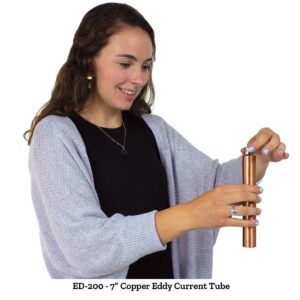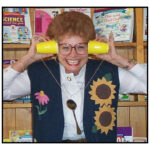 by Ted Beyer
by Ted Beyer
Ahhh, Eddy Current Tubes – you would never think that a hunk of copper pipe and a magnet could make anyone grin from ear to ear. I just love these things.
 So simple in appearance, and yet so magical to see and use. Whenever I happen to have a set at home, I soon lose control of them to my wife who is just as fascinated by them as I am.
So simple in appearance, and yet so magical to see and use. Whenever I happen to have a set at home, I soon lose control of them to my wife who is just as fascinated by them as I am.
Although they can be used in fairly high end physics demonstrations, they are stunning enough that everyone who has a chance to see them is simply amazed.
Just realized – you may not have not seen one, have you? Here’s a video for you:
Kinda cool, huh? So, since I have (hopefully) gotten you to say “wow,” I’ll just bet you are wondering “why” — here’s some science:



 Posted by Tami O'Connor
Posted by Tami O'Connor  by: Marty Sagendorf
by: Marty Sagendorf by: Janice VanCleave
by: Janice VanCleave by: Tami O’Connor
by: Tami O’Connor by: Jim Fiddes
by: Jim Fiddes